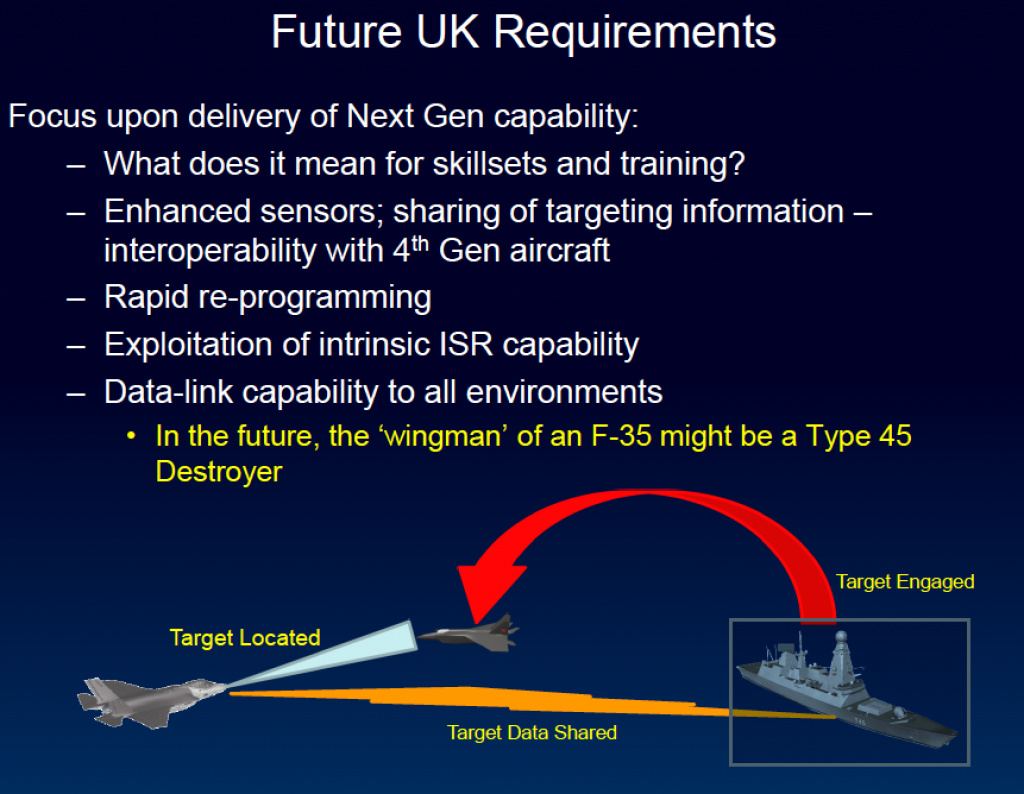2016-09-14 Many years ago we wrote about the long reach of Aegis and the emergence of the offensive defensive enterprise.
Originally designed as a Cold War tool to bolster fleet defense against a challenging Soviet Navy, the Aegis program has since the 1970s evolved and morphed. Among the factors that have exponentially increased the core program’s capabilities, the software and microelectronics revolution has played a major role.
Targeting precision, C4ISR, and missile technologies have all developed, and today Aegis is a key element in global missile defense.
Of central relevance not only to the program but to global security, Aegis coupled with the F-35 Joint Strike Fighter will provide unprecedented modular flexibility at sea for U.S. command authority and our allies as they shape responses to inevitable future crises.
http://www.usni.org/magazines/proceedings/2012-01/long-reach-aegis
More recently, Captain Nick Walker in his presentation on the Queen Elizabeth carrier referred to the Type 45 destroyer as the wingman of the F-35 which is a variant of our own argument that Aegis can operate as the wingman for the Aegis.

Now tests at White Sands Missile Range are verifying this capabilty.
According to an article by Geoff Ziezulewicz in a piece published by UPI on September 13, 2016:
Lockheed Martin reported Tuesday that the F-35 Lightning II and and the Aegis weapon system worked together for the first time during a live-fire exercise.
The joint exercise Monday between the company, the U.S. Navy and the U.S. Marine Corps was the first live-fire missile test that successfully demonstrated the integration of the F-35 to support Naval Integrated Fire Control-Counter Air, the company said in a statement.
During the test, an unmodified Marine Corps F-35B acted as an elevated sensor and detected an over-the-horizon threat.
The jet sent data through the aircraft’s Multi-Function Advanced Data Link to a ground station connected to Aegis on the USS Desert Ship, a land-based ship.
The target was then engaged and intercepted with a Standard Missile 6.
Lockheed said the test reflects how the 5th-generation fighter can be a force multiplier.
When the capability is fully realized, it will increase situational awareness using Aegis and the F-35 together to better understand the maritime operational environment.
“Using any variant of the F-35 as a broad area sensor, the aircraft can significantly increase the Aegis capability to detect, track and engage,” Lockheed said.

